Médéa
Médéa
- Code:
- 26
- Name in arabic:
- المدية
- Name in english:
- Médéa
- Name in berber:
- ⴰⴳⴻⵣⴷⵓ ⵏ ⵎⴷⴻⵢⴰ
- Phone Code:
- 025
- Zip code:
- 26000
- Population:
- 819 932 hab. (2008)
- Area :
- 8 866 km2
Presentation of the wilaya
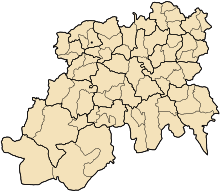
The wilaya of Médéa (in Arabic : ولاية المدية , in Berber : ⴰⴳⴻⵣⴷⵓ ⵏ ⵎⴷⴻⵢⴰ ) is an Algerian wilaya located in the north of the country. Having as its capital the city of the same name .
It is located between the regions of Tell and the Plateau tops in a territory called the Titteri under the Ottoman administration .
The wilaya is located in the North of Algeria. It is limited by the following wilayas:
■ The Wilaya of BLIDA in the North.
■ The wilaya of Djelfa in the South.
■ The wilayas of Ain DEFLA and Tissemsilt in the West.
■ The Wilayas of M'SILA and Bouira in the East.
The capital of the wilaya is located 88 km west of the capital, Algiers.
The wilaya covers an area of 8,775.65 km2.
The wilaya of Médéa has 19 daïras including 64 municipalities.
Daïras and Communes
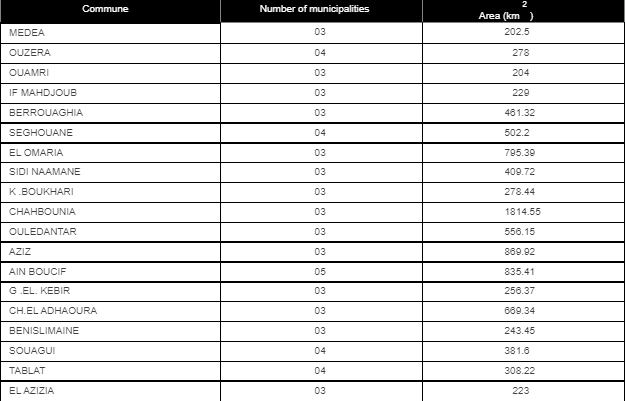
GEOGRAPHICAL SITUATION (Relief - Climate, etc.)
The wilaya of Médéa is located in the center of the country in the heart of the Tellian Atlas in three different regions Kabylia in the far east of the Wilaya, Lower Kabylia in the North-East and the large part that remains in Titteri , it consists of a transit zone and a link between the Tell and the Sahara , and between the Eastern Highlands and those of the West . It is delimited :
- to the north, by the wilaya of Blida ;
- to the west, by the wilayas of Aïn Defla and Tissemsilt ;
- to the south, by the wilaya of Djelfa ;
- to the east, by the wilayas of M'Sila and Bouira .
Wilayas bordering the wilaya of Médéa | ||
| ||
Relief
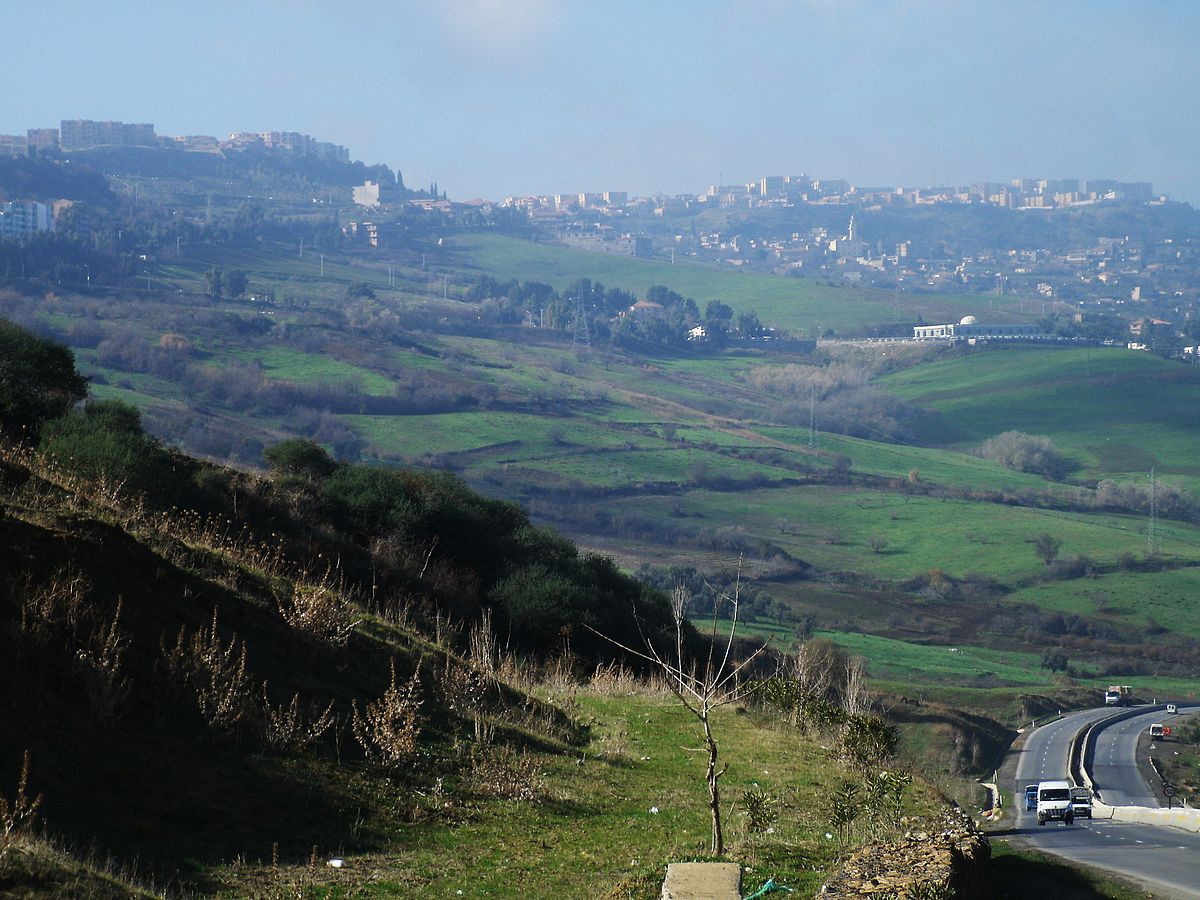
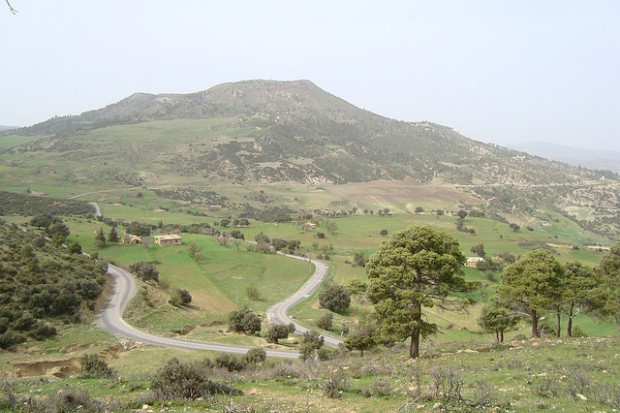
The wilaya of Médéa is a mountainous wilaya which is an integral part of the Tell region is located in the Tell Atlas and is thus characterized by a high altitude and an eventful relief enclosing a few plains of low extension. In the south, it extends to the borders of the high steppe plains 3 . The wilaya is characterized by four main geographical areas :
- The mountainous Tell : forest region with marked relief, a harsh and sparsely populated climate, encircling the wilaya to the west and north, from the Ouarsenis to the Tablat massif ;
- The Tell collinien : agricultural settlement region, located in the center of the wilaya ;
- The Tell plains : located inside the Collinian Tell, they are devoted to cereals , however polyculture has recently been implemented ;
- The southern piedmont of the Tell : transition zone towards the high steppe plains, it is characterized by an irregular rainfall .
- The Wilaya of Médéa has 64 municipalities
46 municipalities (the north of the wilaya) are geographically part of the Tell and the 18 remaining municipalities (the south) are part of the Plateau tops .
Weather
The climate of Médéa is characterized by characteristics due to its position on the mountains of the Tellian Atlas and its altitude which reaches 1,240 m as well as its exposure to winds and waves of currents coming from the West to 3 .

NATURAL POTENTIALITIES
The tidal biosphere divided into four main regions:
mountainous region
It is a continuous mountain range that surrounds the western and northern sides of the state. The mountainous area stretches from Al- Wanchris to the end of Tablat. It is characterized by low population density and forest cover, and the breeding of livestock. .
hill region
It is located in the center of the wilaya and is characterized by its agricultural character, as it is known for its cultivation of vineyards producing various types of grapes, in addition to the cultivation of fruit trees, in particular apples.
Area Plains
This area includes the Bani Suleiman Plains and the Marashda Plains, located in the middle of the hilly region, whose plains are widely known for planting fruit trees and raising cattle.
Southern region
This region is characterized by irregular rainfall, and cereal cultivation abounds on a large scale in addition to the herding of sheep, cows and goats.The southern region stretches from Bugzoul to the end of chellalat el adhaoura It is interspersed with the Al-Wunshiris mountain range towards Qasr Al-Bukhari and the Al-Titri mountain range towards chellalat el adhaoura
Vegetation cover
Medea is available on the estimated 161,320 hectares forest area mostly pine trees - Halabi, cork oak- holm oak both Tablat and Berrouaghia, as well as trees, also experienced different plant growth using certain drugs, including including Rosemary, Elm and Heather and Alcalitus. This forest wealth, which represents 18.38% of the total area of the state, has allowed the spread of a wide variety of wild animals, including wild rabbits, wild cats, turtledoves and water ducks. , and protected animal species widespread in its forests, including the mago monkey, raptors and other birds
ECONOMIC POTENTIALITIES
Agricultural potentials

The total area of the agricultural sector is estimated at: 773,540 hectares, of which 337,938 hectares are arable and 9,773 hectares are irrigated.
The model of agriculture varies between mountainous culture in the north and the vast steppes in the south, with interior plains and plateaus in the middle. Thus, the type of breeding followed tends to breed livestock with the predominance of diversified crops, field crops and poultry farming.
As it employs over 60% of the working class, the sector is one of the most important economic sectors in the state.
The legal nature of agricultural land shows the predominance of the private sector with 35,500 female investors covering an area of 284,394 hectares (or 84% of arable land) and 744 female investors occupying the state's public land with an area of 53 544 hectares (16% of the total arable land).
vegetable production
Winter cereals: covers an area of 110,000 hectares , representing 35% of the arable area, with an average annual production of 1.2 million quintals.
Fruit trees: represent 20,000 hectares of all kinds, with an average annual production of 450,000 quintals.
Viticulture: It has a particular character in the wilaya and is characterized by its good and late production. It occupies an area of approximately 7,300 hectares. Its average annual production is estimated at 250,000 quintals. It is made up of the following types: Dati Beyrouth, Makrani, Hammar Bouamer, Mosca Qorbaz, Sanso, Karenia, Mix (Tokai), Alicante, Cabarney, Clarat (Oqni-White).
The wilaya's vineyard producing regions are as follows: Medea, Wazra, Si Mahjoub, Al-Brouaqia, Al-Amariah and Amri. The commune of Ben Chicao is classified among the most beautiful vineyards in the world.
Animal production
Sheep farming is estimated at around 850,000 head, with an average meat production of 4,500 tonnes / year.
The breeding of dairy cows is estimated at: 19,300 head and gives an average production of: 50 million liters / year.
Beekeeping: There are currently 58,000 hives and gives an estimated average production of: 1,500 quintals / year.
Industry
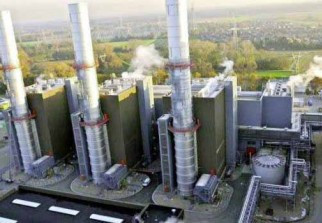
The state of Medea is considered a pioneer in the field of traditional industries and crafts, especially artistic ones. It also knows a diversity of artisanal products, dictated by cultural richness.
It is in urban centers with a strong communication network that
the industrial fabric is developed, two closely related variables. Almost all of the national and regional industrial units are located on the RN1 road axis. The most important locations concern:
■ Pharmaceutical industry in Médéa
■ Mechanical industry in Berrouaghia
■ Cereal industry in Ksar El Boukhari

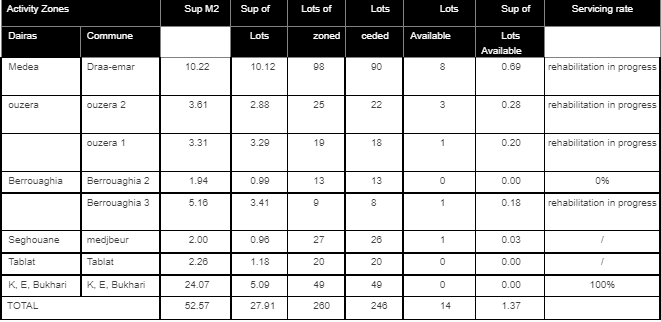
Hydraulic
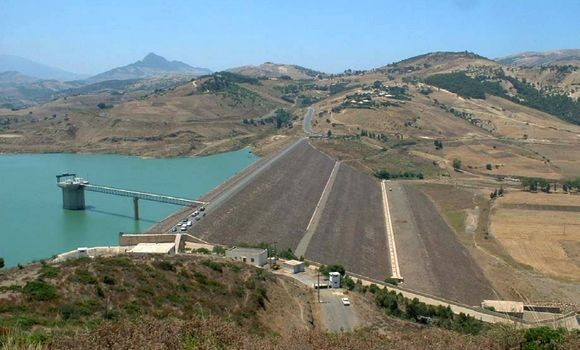
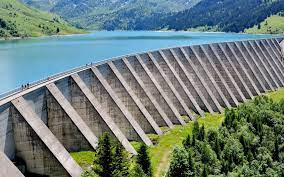
This wilaya includes the following dams :
- Béni Slimane dam .
- Boughezoul dam .
- Bouromi dam
- Ghribe dam
- Koudia Aserthoun dam.
The wilaya has several thermal springs
Road network
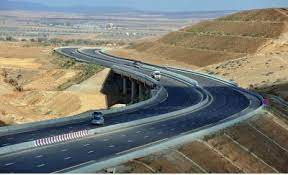
The road infrastructure in the state of Medea is the pillar of exchanges between the regions of the state to meet needs and develop economic activity.
The road network (national roads, national roads and municipal roads) is made up of:
10 main axes of national roads

Health :
HOSPITAL HEALTH STRUCTURES

LOCAL PUBLIC HEALTH ESTABLISHMENTS
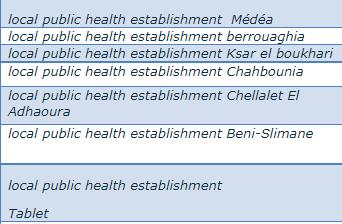
TOURIST ACTIVITIES
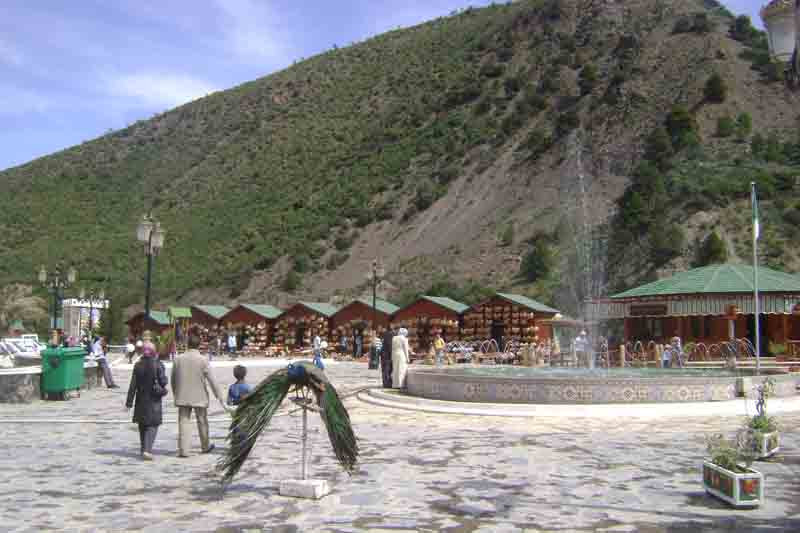
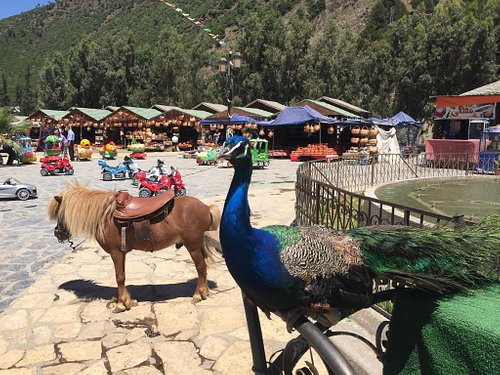
The natural, cultural and archaeological potentials of the wilaya qualify for making tourism a promising development activity. From an economic point of view, the sector can lead to a dynamic of push not only to bring in foreign currency but also in the pattern of activity (creation of direct and predictable jobs).
Its mountains and plains of great beauty, its archaeological, natural, historical and religious sites, its culinary art, its traditional industries and the hospitality of the inhabitants of Medea make it an excellent destination for visitors who yearn for rest, recreation and exploration. and predictable jobs).
Its mountains and plains of great beauty, its archaeological, natural, historical and religious sites, its culinary art, its traditional industries and the hospitality of the inhabitants of Medea make it an excellent destination for visitors who yearn for rest, recreation and exploration.
2, rue des Frères Benterkia.bp 711, Medea, Algeria, 26000
 Contact details of the Chamber of Commerce and Industry of
Médéa
Contact details of the Chamber of Commerce and Industry of
Médéa
CCIT / Titteri Chamber of Commerce and Industry
- Address:
- 2, rue des Frères Benterkia.bp 711, Medea, Algeria, 26000
- Email:
-
cci-titteri@caci.dz
- Mobile:
- There is no primary mobile phone
- Landline number:
-
025 74 31 14
025 74 31 09
025 74 31 10
025 74 31 11
74 31 12
- Fax:
-
025 74 31 12
- Viber:
- There is no viber account
- Work hours:
- 8h00 à 12h00 et de 13h00 à 16h30
- Website:
- http://www.cci-titteri.dz

